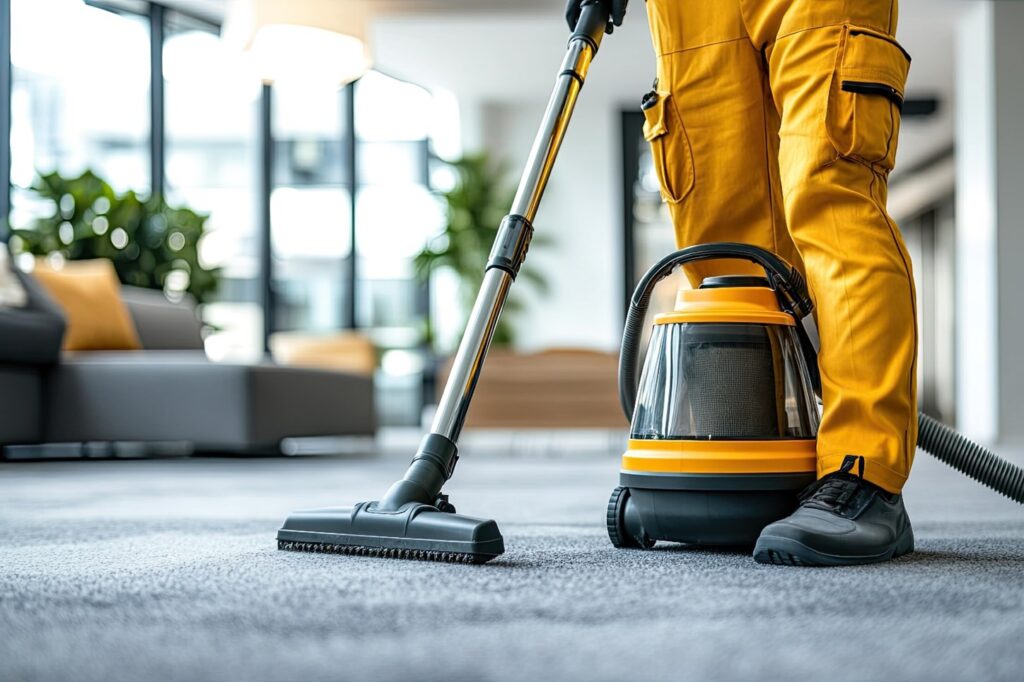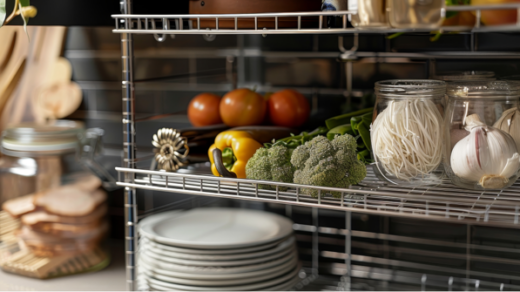
Maintaining cleanliness in commercial spaces such as hotels, restaurants, schools, and offices requires effective cleaning tools, with vacuum cleaners playing a crucial role. Studies show that up to 25% of a building’s cleaning costs are dedicated to vacuuming alone. That’s why selecting the right type of commercial vacuum cleaner is so important for your business. Investing in reliable, quality vacuums can save you both time and money in the long run.
Global Industrial reviews everything you need to know to make an informed decision about commercial vacuums, from the types of flooring and environments to consider to the various models available.
Step 1: Identify the Flooring Types
Unlike homes, which can often manage with a single vacuum type, commercial spaces demand specific vacuums based on the types of flooring they have. Here are the main categories to keep in mind:
- Bare Floors
Bare floors include materials such as hardwood, tile, vinyl, and concrete. These surfaces are common in gyms, kitchens, loading areas, and showrooms. Each type has unique cleaning requirements, and vacuums designed for bare floors are often equipped with gentle brushes or rubberized wheels to prevent scratches. - Carpeted Floors
Carpeting, whether in short or deep pile, is found in offices, schools, and hotels. High-traffic commercial areas benefit from carpet vacuums with motorized brushes that reach deep into the carpet fibers to lift embedded dirt and debris. - Rugs
Rugs tend to have a thicker pile, and some vacuums may struggle with these textured surfaces. Many vacuums allow you to disengage the brush to make cleaning rugs easier, while delicate rugs may require handheld vacuum tools to avoid damage.
In addition to flooring type, consider the level of foot traffic and the types of substances typically encountered in each area. For instance, an office or school likely sees moderate wear and tear, while industrial settings may require vacuums capable of handling heavier debris.
Step 2: Explore Different Types of Commercial Vacuums
Once you’ve assessed the flooring and traffic levels in your facility, you can select the vacuum best suited for your needs. Here’s a rundown of the main types of commercial vacuums available:
Corded vs. Cordless Vacuums
Corded vacuums offer powerful suction but can be cumbersome to move around, especially in large spaces. Cordless models provide mobility and convenience, though they typically have less suction strength and need regular recharging. Your choice will depend on the balance you prefer between convenience and power.
Backpack Vacuums
Backpack vacuums are popular in commercial spaces, especially with cleaning crews who work for lengthy periods. Lightweight and ergonomic, these vacuums allow for greater mobility and ease when navigating obstacles. Many backpack models also include HEPA filters, making them ideal for areas with high air quality requirements.
Robotic Vacuums
Perfect for large, open spaces like warehouses, gyms, and convention centers, robotic vacuums can be left to operate autonomously. They’re battery-powered and often include boundary features to limit their cleaning to specific areas. These vacuums work best as supplementary cleaning tools, as they may not fully replace traditional methods for heavier cleaning tasks.
Upright Vacuums
An upright vacuum is the classic model, suitable for general-purpose cleaning in hotels, offices, and restaurants. Easy to move across large areas, upright vacuums are an efficient choice for room-to-room cleaning. However, heavier models can be difficult to carry up staircases.
Wet/Dry Vacuums
Wet/dry vacuums offer versatility for spaces where spills and debris are common, such as garages and workshops. Capable of handling both liquid and solid messes, these vacuums save time and effort. Note that they’re often noisier than other types, so they might not be suitable for quiet environments.
Canister Vacuums
With a two-part design, canister vacuums are a great choice for maneuvering around and under furniture. They are ideal for spaces like hospitals, schools, and hotels where furniture and obstacles are common. Canisters allow for easy access to hard-to-reach places, including tight corners and stairways.
Handheld Vacuums
Handheld vacuums are compact and designed for cleaning small areas or furniture. They’re not suitable for covering large areas but can handle upholstery, curtains, and tight spaces. Handheld models are ideal for touch-ups and detailed cleaning where full-sized vacuums are impractical.
Step 3: Consider Important Features
When selecting a commercial vacuum, a few key features can significantly impact functionality and ease of use.
- HEPA Filters
High-Efficiency Particulate Air (HEPA) filters trap allergens and small particles, improving air quality and making them ideal for spaces where air purity is a priority. - Bagged vs. Bagless
Bagged vacuums hold more dust and debris and are generally more effective at containing allergens, which is useful in environments with allergy concerns. Bagless models can be convenient but may not provide the same level of filtration. - Edge-to-Edge Cleaning
This feature enables the vacuum to clean right up to walls, furniture, and other boundaries, reducing the need for additional cleaning. - Cord Length
Cord length can be crucial for larger areas, allowing for more mobility. If you need extra length, extension cords can help. For maximum flexibility, consider a cordless model. - Weight
If your team needs to carry the vacuum over stairs or long distances, weight becomes a factor. Heavier vacuums may offer more power but are harder to transport. - Noise Level
Certain vacuums are significantly louder than others, particularly wet/dry vacuums. If you’re cleaning in a quiet environment, opt for a quieter model to minimize disruption. - Additional Tools
Most vacuums come with attachments to tackle different surfaces and hard-to-reach areas. Check the model’s tool set to ensure it meets your specific cleaning needs.
Final Thoughts: Selecting the Right Vacuum for Your Business
Choosing the right commercial vacuum doesn’t have to be overwhelming. By assessing your specific cleaning requirements and understanding the types of vacuums and features available, you can make an informed choice that ensures effective and efficient cleaning for your business. Investing in high-quality vacuum cleaners suited to each area of your commercial space can lead to long-term savings and a cleaner, healthier environment.



